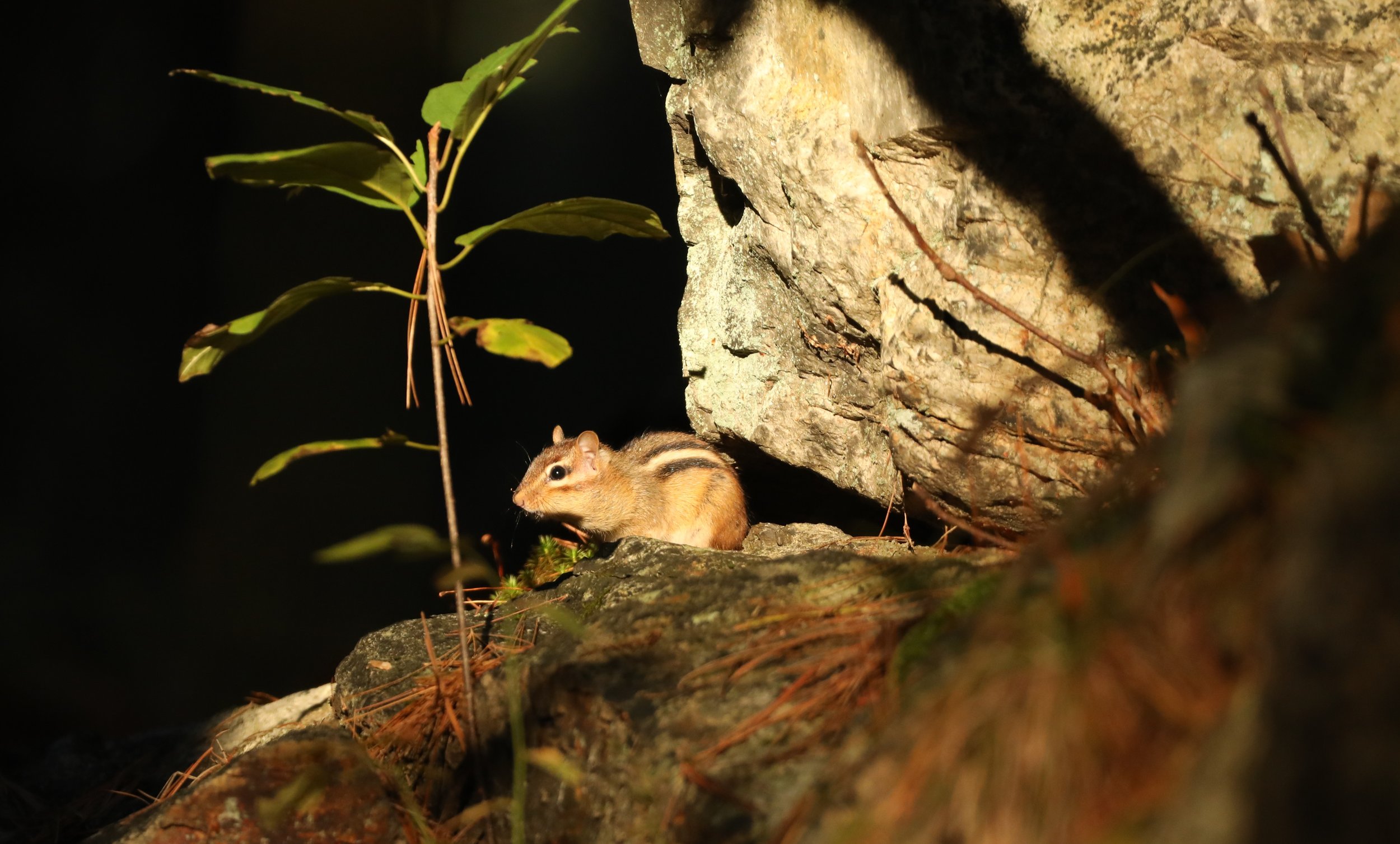Eastern Chipmunk
Eastern Chipmunk with mouthful of oak leaves
Meg Sodano, creator of the beautiful illustration writes, “The burrow consists of a series of tunnels of varying widths, and may follow alongside large tree roots. Side pockets are used to hoard food like nuts and seeds, collect empty shells, and sometimes as extra space to turn around when space gets tight. Centrally located is the nest chamber, which is lined with crunched up dry leaves – cozy! Narrow tunnels extend downward in places to draw water away from the burrow. The chipmunks tend to excavate these into the dense layer of hardpan, which doesn’t absorb water well, so sometimes water can collect at the bottom of these drainages.”
Chipmunks are diurnal and do not have fat reserves for hibernation. They feed on reserves of food and wake up to eat throughout the winter months. During sleep, their heart rate is lowered from 350 bpm to 4 bpm, and their rate of respiration drops and their body temperature falls from 95-105.8o F to 41-44o F. (Source: meigspointnaturecenter.org)
"SAVE THE FOREST, IT'S MY HOME"
A resident of the NEMT Forest, this little Eastern Chipmunk, was observed collecting mouthful of oak leaves, perhaps to line their nest or to plug a secondary entrance to their 10'-30' long underground network of tunnels. A single chipmunk can collect 5000-6000 nuts by the end of fall to make it through winter! Their stretchy cheek pouch can hold a stash of nuts three times the size of their head. According to National Geographic,
a chipmunk can gather as many as 165 acorns in a single day, and by foraging, contribute to dispersal of seeds and mycorrhizal fungi, which benefit trees and thereby the whole ecosystem.
Thoreau wrote about the Eastern Chipmunk, “How commonly in the fall you see the cheek-pouches of the striped squirrel distended by a quantity of nuts! This species gets its scientific name, Tamias, or the steward, from its habit of storing up nuts and other seeds. Look under a nut tree a month after the nuts have fallen, and see what proportion of sound nuts to the abortive ones and shells you will find ordinarily. They have been already eaten, or dispersed far and wide.” (The Succession of Forest Trees, 1860)
© Meg Sodano, www.msodanoillustration.com.




